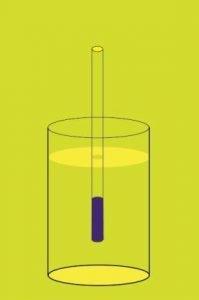Science behind flying of birds in the sky. One of the necessities for heavier-than-air flying machines is a structure that consolidates quality with light weight. This is valid for winged animals and in addition planes. Feathered creatures have numerous physical highlights, other than wings, that cooperate to empower them to fly. They require lightweight, streamlined, unbending structures for flight. The four powers of flight – weight, lift, drag and push – influence the trip of winged creatures.

Godwits – intended to fly
Likewise with other flying winged creatures, godwits have numerous physical highlights that cooperate to empower them to fly. They require lightweight, streamlined, inflexible structures for flight.
Science behind flying of birds in the sky.
Physical highlights
Flying birds have:
- lightweight, smooth quills – this decreases the powers of weight and drag
- a nose, rather than overwhelming, hard jaws and teeth – this lessens the power of weight
- an amplified breastbone called a sternum for flight muscle connection – this assists with the power of push
- light bones – a winged creature’s bones are essentially empty with air sacs and thin, little cross pieces to make bones more grounded – this decreases the power of weight
- a inflexible skeleton to give firm connections to ground-breaking flight muscles – this assists with the power of push
- a streamlined body – this lessens the power of drag
- wings – these empower the power of lift.
Science behind flying of birds in the sky.
Wings
The state of a flying creature’s wing is vital for delivering lift. The expanded speed over a bended, bigger wing zone makes a more drawn out way of air. This implies the air is moving all the more rapidly super surface of the wing, diminishing gaseous tension on the highest point of the wing and making lift. Additionally, the point of the wing (tilted) avoids air downwards, causing a response compel the other way and making lift.
Bigger wings create more noteworthy lift than littler wings. So littler winged fowls (and planes) need to fly quicker to keep up indistinguishable lift from those with bigger wings.
Wing stacking discloses to you how quick a flying creature or plane must travel to have the capacity to look after lift: wing stacking = weight/wing region (kilograms per square meter).
A littler wing stacking number means the fledgling/plane can fly all the more gradually while as yet keeping up lift and is more flexibility.
Skimming
At the point when a flying creature is skimming, it doesn’t need to do any work. The wings are held out to the side of the body and don’t fold. As the wings travel through the air, they are held at a slight point, which diverts the air downwards and causes a response the other way, which is lift. Be that as it may, there is likewise drag (air opposition) on the fledgling’s body, so occasionally, the flying creature needs to tilt forward and go into a slight plunge with the goal that it can keep up forward speed.
Taking off
Taking off flight is an exceptional sort of coast in which the winged creature flies in a rising air current (called a warm). Since the air is rising, the winged animal can keep up its stature with respect to the ground. The gooney bird utilizes this sort of taking off to help its multi-year voyages adrift.
Fluttering
Flying creatures’ wings fold with an all over movement. This drives them forward. The whole wingspan must be at the correct approach, which implies the wings need to turn (and do as such naturally) with each descending stroke to keep lined up with the course of movement.
Taking off and fluttering
Winged creatures can fly in different ways. The gooney bird shows taking off, while the godwit is on the downbeat, fluttering.
A feathered creature’s wing produces lift and push amid the downstroke. The air is diverted downwards and furthermore to the back. The feathered creature lessens its approach and somewhat overlays its wings on the upward stroke so it goes through the air with the minimum conceivable opposition. The internal piece of the wing has almost no development and can give lift correspondingly to floating.

Acquiring push
Flying creatures get pushed by utilizing their solid muscles and fluttering their wings. A few winged creatures may utilize gravity (for instance, bouncing from a tree) to give them forward push for flight. Others may utilize a running take-off starting from the earliest stage.
Diverse flight capacities
Diverse winged animals have distinctive versatile highlights to meet their flight needs:
- Some flying creatures are little and can control their wings and tail to move effectively, for example, the fantail.
- The peddle, with its extensive wingspan, is fit for speed and taking off.
- Gannets and seabirds are streamlined to jump at high speeds into the sea for fish.
- Godwits, albeit little, are prepared to fly long separations.
- https://www.youtube.com/watch?v=3So7OMwNgy8



